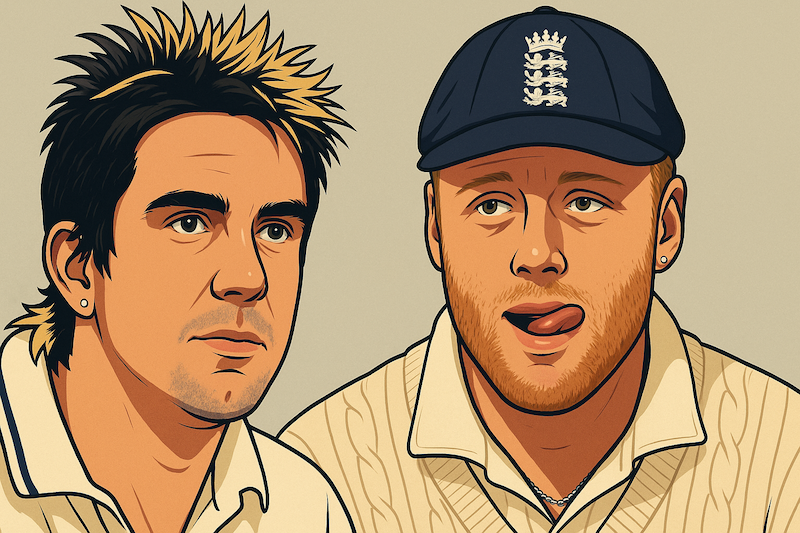
A batter is struck on the helmet, play stops, the physio rushes out, and the umpires consult while the big screen announces that a concussion check is underway.
Moments like these raise clear questions: What is the concussion rule? Why was it introduced? What happened before it existed? Who can be replaced and when? How often has it been used? And why do medical staff now arrive so quickly after any blow to the head?
What is the concussion rule?
- In international cricket, a player diagnosed with a concussion during a match can be replaced by a like-for-like substitute.
- The replacement player is allowed to bat and bowl in place of the concussed player.
- The change only becomes official once it is approved by the match referee.
Why it was introduced, and what was there before?
- The concussion rule was introduced on 1 August 2019 to protect players from the dangers of head injuries.
- It ensured that teams would no longer have to play the rest of a match with just 10 effective players.
- Before this change, substitutes were only permitted to field and could not bat or bowl.
- A short-lived “super sub” rule in 2005 allowed tactical changes in ODIs but was quickly withdrawn.
- Domestic leagues in England (2018) and Australia tested concussion replacements before the ICC made it a global rule.
How a concussion replacement works, step by step?
- If a player is struck on the head or neck, play is stopped immediately for medical checks.
- A doctor or physio performs an assessment, and if concussion is diagnosed or suspected, the player must leave the field.
- The team then requests a like-for-like replacement, which is reviewed by the match referee.
- The referee approves the replacement if the proposed player matches the injured player’s role.
- Once the replacement is approved, the new player takes full part in the match and the concussed player cannot return.
Explore More Stories

2005 Ashes: The Summer Cricket Became Theatre
The 2005 Ashes was more than just a cricket series. It was a rollercoaster of emotion, courage, and unforgettable moments that brought Test cricket back to life. England’s long wait finally ended, and the world watched history unfold.

What Happened to Zimbabwe Cricket? The Rise, Fall, and Fight for Survival
Once they challenged the world’s best, now they struggle to stay afloat. Zimbabwe cricket’s journey from the glory of 1999 to years of chaos and heartbreak is a story of politics, power, and lost pride, and of a nation still dreaming of revival.
What counts as a concussion for replacement?
- A concussion replacement is allowed if a head or neck impact during the match leads to a diagnosed or suspected concussion.
- Such incidents may occur while batting against a bouncer, wicketkeeping, fielding on the boundary, or during a collision.
- If medical staff clear the player after checks, they may continue playing, but symptoms can still develop later.
- Players are regularly re-assessed, and if symptoms appear later, they must be withdrawn immediately.
How many concussion replacements so far?
- Since the rule came into effect in August 2019, there have been 19 concussion replacements in Test cricket up to June 2025.
- Several additional cases have occurred in ODIs and women’s internationals.
- Teams such as West Indies, Bangladesh, England, Pakistan, Zimbabwe, Afghanistan, and India have all used concussion replacements.
Why the physio arrives so quickly now?
- Cricket treats every blow to the head as a potential brain injury, so medical staff respond without delay.
- The player is checked immediately, even if they appear fine at first.
- The clinician screens for symptoms such as dizziness, confusion, headache, balance issues, or neck pain.
- The player may be removed to a quiet area for further tests, and the game pauses while this takes place.
Examples that shaped understanding
- At Lord’s in 2019, Steve Smith was struck by Jofra Archer and later replaced by Marnus Labuschagne, the first use of the rule in a Test match.
- In the same year, Bangladesh became the first team to use two concussion replacements in a single match when Liton Das and Nayeem Hasan were both injured in Kolkata.
- In women’s cricket, West Indies used the rule after Chinelle Henry suffered a boundary collision.
- In 2020, Australia’s Will Pucovski was ruled out with concussion symptoms after being struck on the helmet in a tour match against India.
Why the concussion rule matters?
- The concussion rule places player safety above all else by allowing immediate medical decisions to be backed by substitutions.
- It enables teams to continue with a full 11 players instead of being handicapped by an injury.
- It ensures that matches are not decided simply because one player suffered a concussion.
- Since 2019, the rule has made cricket safer without reducing the fairness or competitiveness of the game.





